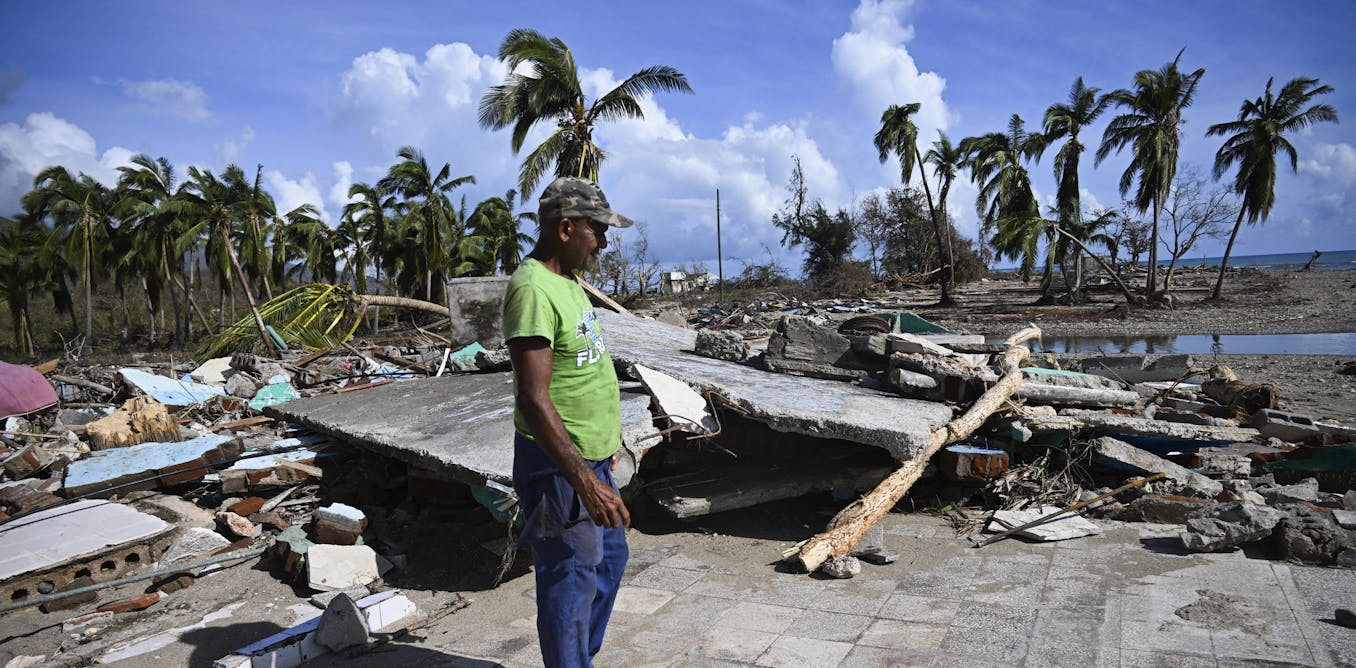While many European cities struggle with rising rents and increasing housing shortages, Vienna manages to maintain more stable conditions in international comparison. Affordable housing, high architectural standards, and a wide range of publicly subsidized housing options ensure that a large portion of Vienna’s population—regardless of income—has access to high-quality housing. Although Vienna is not without challenges, the city is frequently regarded as an international model. But how exactly does this model work—and what sets Vienna apart from other cities?
In many major European cities, finding quality housing is becoming increasingly difficult—especially for people with low or middle incomes. While cities like Berlin, Paris, or London are grappling with skyrocketing rents and social displacement, Vienna has managed for decades to provide a wide supply of affordable and high-quality housing. Numerous international media outlets—including The New York Times—regularly report on Vienna’s housing model, which is held up as a blueprint abroad. And indeed, average rents in Vienna are significantly lower than in other European metropolises—without compromising on quality.
What surprises many: Nearly two-thirds of Viennese residents live in subsidized housing—not in distant suburbs, but often in the heart of the city, with excellent transport links, thoughtful architecture, and comprehensive social infrastructure. Social housing is not a retreat for the needy but a core pillar of urban development and social equity. With 100 years of experience and continuous development, the Viennese model is internationally unique—delegations from around the world regularly come to learn how Vienna achieves what is considered impossible elsewhere.
A Brief History of Social Housing in Vienna
It wasn’t always this way. After World War I, Vienna faced a social catastrophe: slums, housing shortages, and dire hygienic conditions. The Social Democratic city government responded with one of Europe’s boldest and most sustainable housing initiatives—the municipal housing program of “The Red Vienna (das Rote Wien)”. Between 1919 and 1934, around 65,000 new apartments were built across 382 municipal housing complexes—financed through a progressive housing tax, socially tiered so that the wealthier paid more, while the poorer were exempt. The goal: Housing should not be a privilege but a fundamental right for all.
The first municipal complex was the Metzleinstalerhof on Margaretengürtel. Other landmarks like the famous Karl-Marx-Hof and Reumannhof remain architectural icons and embody a radically new concept of urban living: housing was not just shelter but a holistic social concept. These complexes integrated kindergartens, libraries, laundries, medical facilities, green spaces, and cultural venues. Designed by prominent Austrian architects, including Friedensreich Hundertwasser and students of Otto Wagner, these buildings remain unique even today.

Social housing was brutally interrupted during the Nazi era, but it experienced a renaissance after World War II—particularly from the 1950s onward, as Vienna once again invested heavily in public housing to combat shortages and promote social cohesion.
Three Pillars of Social Housing in Vienna
Today, nearly 500,000 residents live in municipal housing owned by the city, and about 60% of Vienna’s population lives in some form of publicly subsidized housing. Vienna’s social housing rests on three core pillars, which differ in ownership, tenancy conditions, and access requirements—but together create a dense network of affordable homes:
Municipal Housing (Gemeindebau)
Classic municipal housing is directly owned by the City of Vienna. With over 220,000 such apartments, nearly one in four homes in Vienna is municipal—making the city the largest landlord in Europe. These units are generally rented out indefinitely, with stable, legally capped rents, and are accessed via the city’s “Wiener Wohnen” housing service.

Cooperative Housing (Genossenschaftswohnung)
Cooperative apartments are developed by non-profit housing associations. These associations must operate cost-neutrally and may not generate profits. Tenants pay a one-time equity contribution (a construction financing fee) and benefit from long-term low rents, high living quality, and often lifelong tenancy rights. Many cooperatives also encourage resident participation and community-oriented living.

Additionally Subsidized Housing
The third category involves collaborations between the City of Vienna and non-profit developers to create new affordable housing. The city supports these efforts through land allocation, subsidies, or low-interest loans—but requires that a substantial portion of the units be rented out under strict rent caps. These projects often blend affordability with modern architecture, ecological construction methods, and alternative living concepts like intergenerational or co-living communities.
22,000 New Municipal Apartments in Progress
This diversity of housing—from classic municipal complexes to cooperative and additionally subsidized models—forms the foundation of Vienna’s housing success. And the city continues to build on this foundation. With the “Housing Offensive 2024+“, Vienna has launched its most ambitious new program: 22,200 new subsidized apartments for over 45,000 people are being created. About 16,100 of these are already under planning, preparation, or construction, with a total budget of €2.8 billion, supported by €1.1 billion in public housing subsidies. Eight additional developer competitions are expected to generate another 6,100 subsidized homes.

This approach emphasizes a holistic view of housing: Beyond affordability, special attention is given to climate-friendly construction, energy efficiency, and sustainable urban planning. New residential districts are increasingly developed on former industrial or infrastructure sites, transformed into modern and sustainable living spaces. Priorities include social diversity, proximity to schools, public transport, and local services, as well as generous green and recreational areas.
Challenges Ahead for Social Housing in Vienna
However, Vienna’s social housing model also faces challenges. The city is growing—and with every new resident comes added pressure on the housing market. People move to Vienna because the city works—but they too need affordable, quality homes. At the same time, rising construction and land prices make building new housing more difficult.
Maintaining the existing 220,000 municipal apartments is also a major undertaking. To modernize its housing stock, Vienna is currently investing about €1 billion to gradually renovate and update these units.
And because space in a growing city is limited, Vienna has taken precautions: two-thirds of all newly zoned land must be allocated to social housing. The city has also been actively purchasing land for years—currently owning about three million square meters (roughly 430 football fields) for future development.
Austria Leads in Social Housing – European Comparison
Austria leads the EU in terms of the share of publicly subsidized social housing. With approximately 24% social housing, the country provides nearly three times more than the EU average.
This has tangible effects—not just for those living in public housing or cooperatives, but for all tenants in Vienna. The large volume of social housing exerts downward pressure on the entire rental market. Public housing increases supply outside the private market, sets lower price benchmarks, and forces private landlords to keep rents in check. As a result, private market rents in Vienna remain comparatively affordable—an effect many cities with low social housing shares fail to achieve.
The numbers speak for themselves: In Vienna, average rent is about €10.30/m². In contrast: Amsterdam ~€27.80, Dublin ~€25.60, Paris ~€24.20, London ~€31.70. Even Munich (~€19.40) and Barcelona (~€18.10) are far above Vienna’s level.

Vienna’s Broader Support Measures
Beyond social housing, the city implements targeted measures to ease rent and utility costs.
One major goal is the long-term limitation of rent increases—and Vienna goes further than federal measures. While the Austrian federal government (run by the conservative-green coalition) has implemented only a temporary rent cap allowing annual increases of up to 5%, the SPÖ advocates for a permanent rent ceiling of just 2% per year. Vienna is already implementing this locally. The city also supports calls for a legal rent cap and the abolishment of fixed-term rental contracts.
Vienna also offers energy cost support: With its “Energy Assistance” program, the city helps low-income households pay for electricity, gas, and district heating. Additionally, Vienna provides a one-time €100 energy voucher, automatically sent to about 130,000 households—especially those exempt from the ORF broadcasting fee. Compared to other Austrian regions, Vienna invests the most in anti-inflation measures: €373.94 per capita—almost double the national average of €201.03.
How to Apply for Vienna Social Housing
In Vienna, the path to a municipal apartment is clear and intentionally low-threshold, to ensure broad access to affordable housing. The first step is to apply for a “Wohn-Ticket” via Vienna’s housing consultation office (Wohnberatung Wien). This document confirms eligibility for subsidized housing, which includes criteria such as:
- Having had your primary residence in Vienna for at least two years
- Austrian or equivalent citizenship
- Minimum age of 17
- Income below a certain threshold (adjusted by household size)
Starting May 1, 2025, access will be further eased: It will no longer be necessary to have lived at the same address in Vienna for two years—just to have had your main residence somewhere in Vienna. Eligibility will also be extended to anyone qualifying for rent or housing assistance.
Once you receive the Wohn-Ticket, you can actively apply for municipal or other subsidized apartments. Allocation is based on personal housing needs, such as urgency, apartment size, or family situation. The housing office provides support through consultations, online platforms, and housing offers.
From 2026, a centralized Vienna Housing Ticket will be introduced, with a more flexible point-based system. Eligibility criteria will be revised—for instance, requiring only two years of general residence in Vienna, not at a single address. This is designed to assist young people in shared housing or those needing to move due to separation or other life changes.
The rights to the content remain with the original publisher.

The post “A Global Model for Affordable Living” by Justus Hartmann was published on 06/21/2025 by thebetter.news





































Leave a Reply